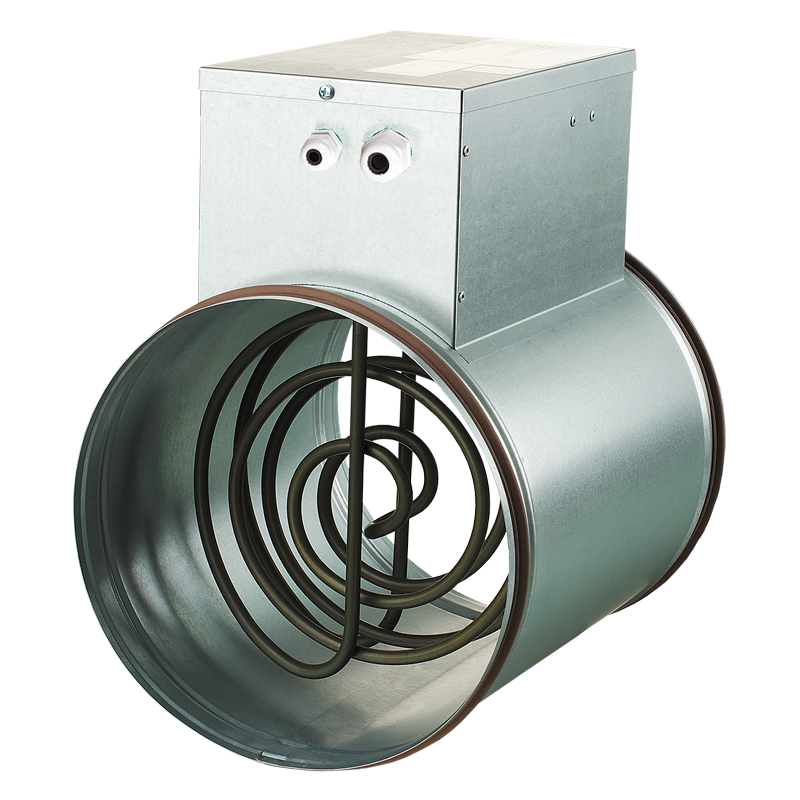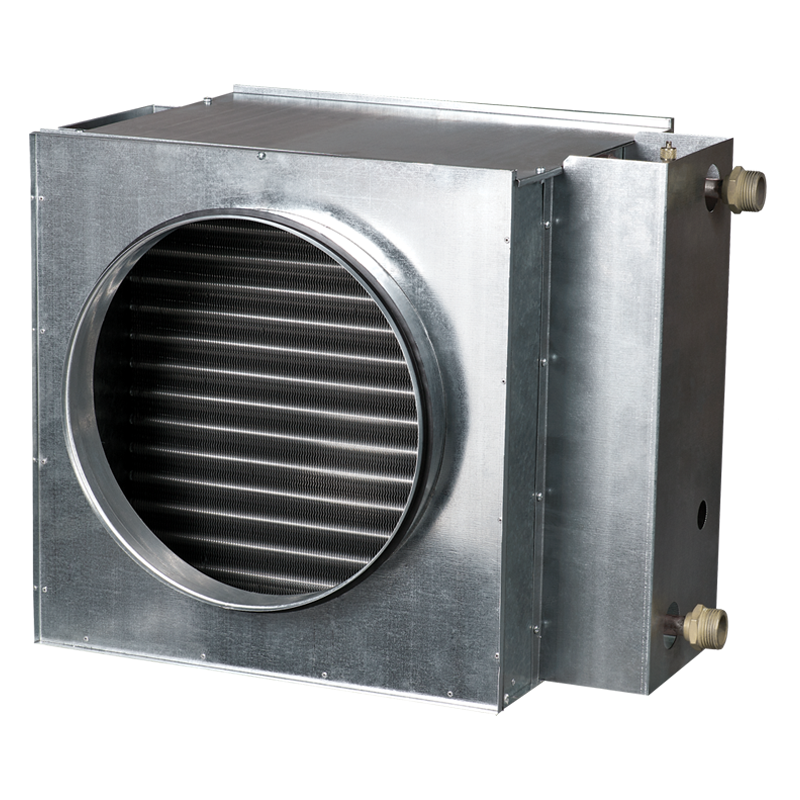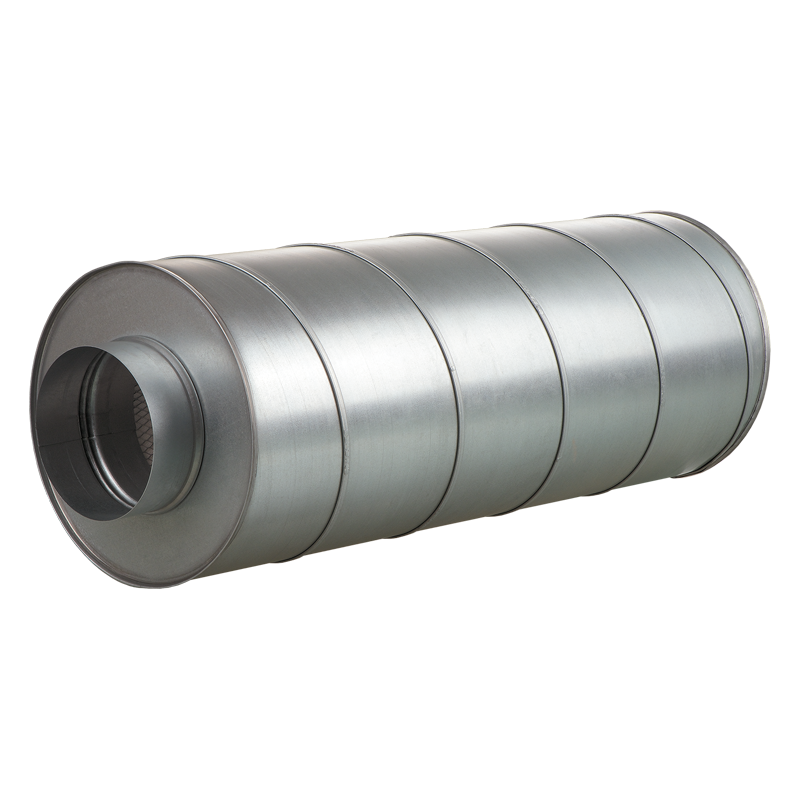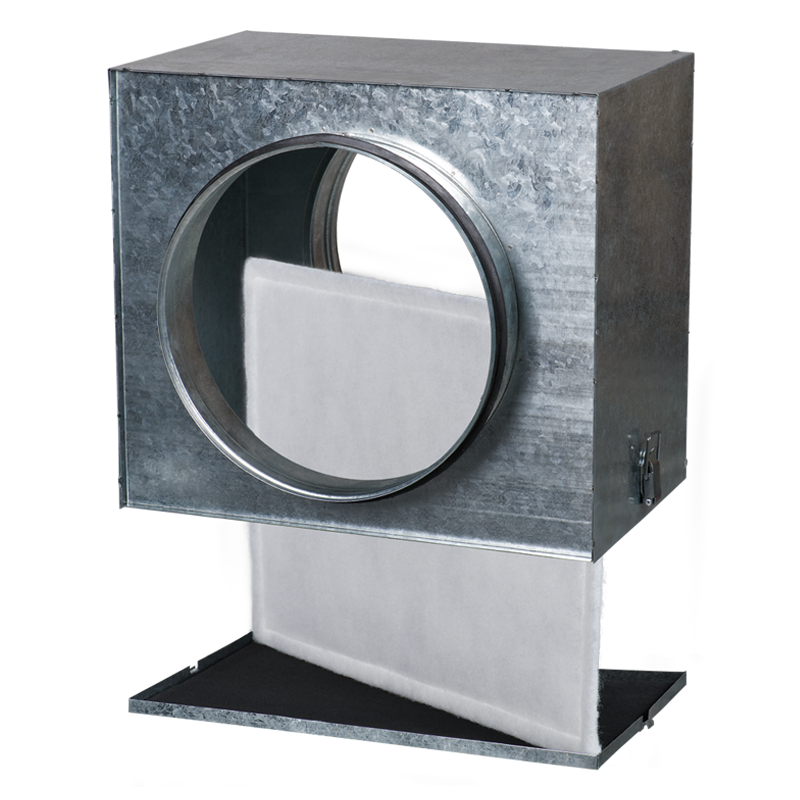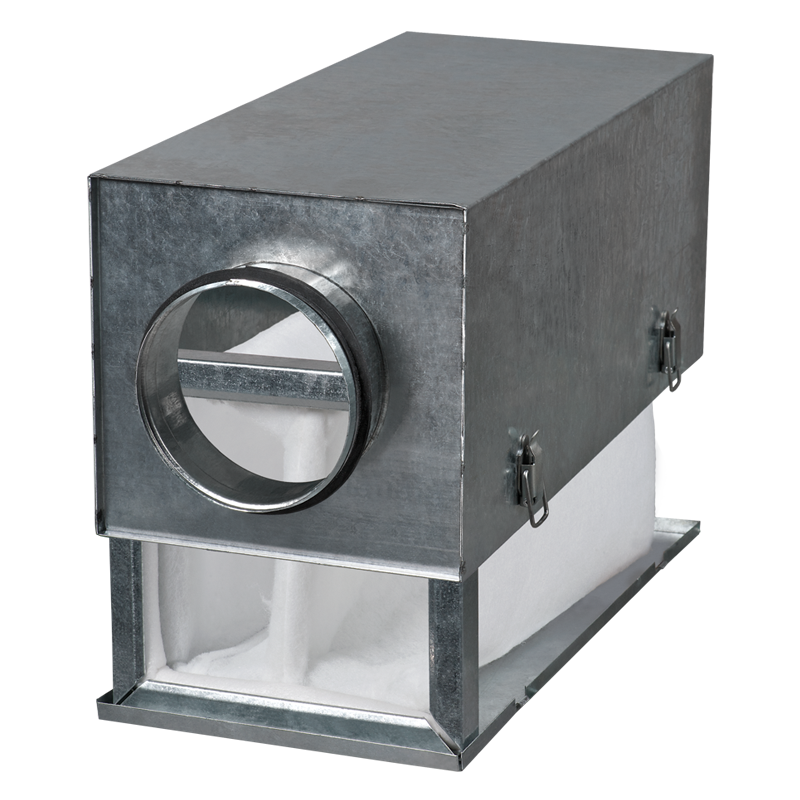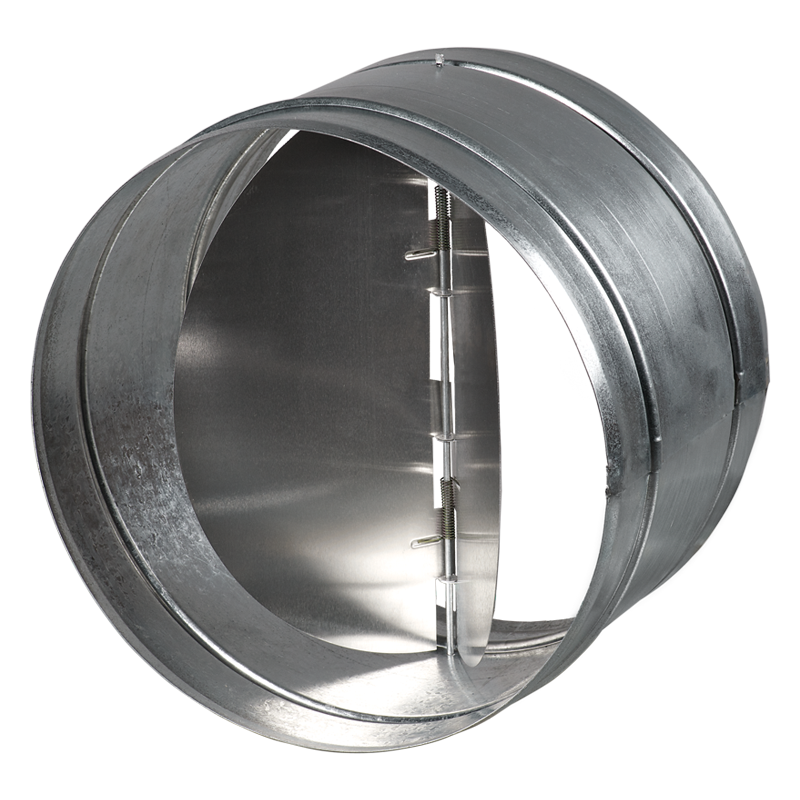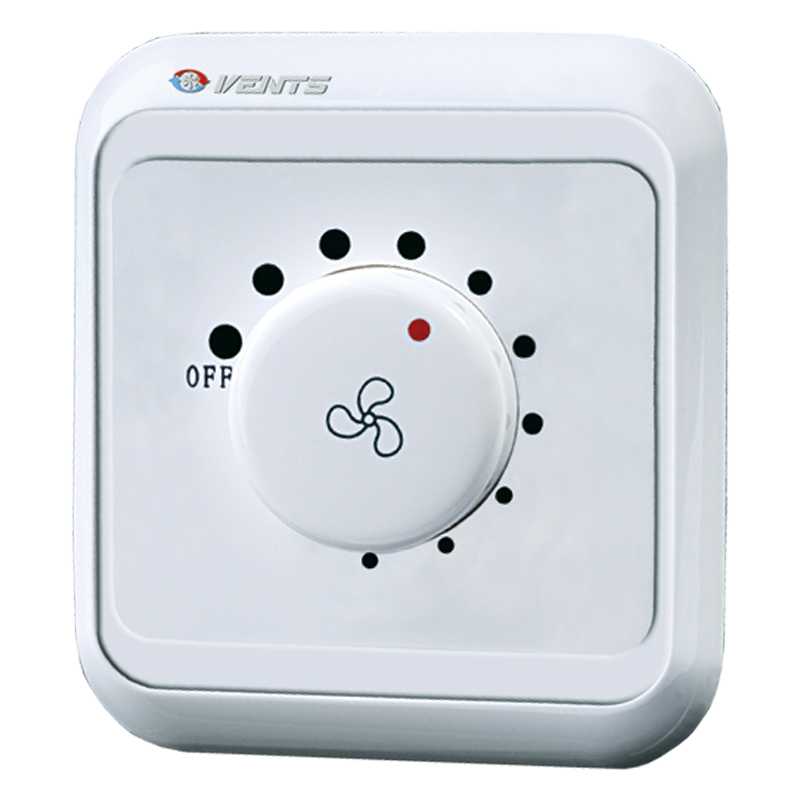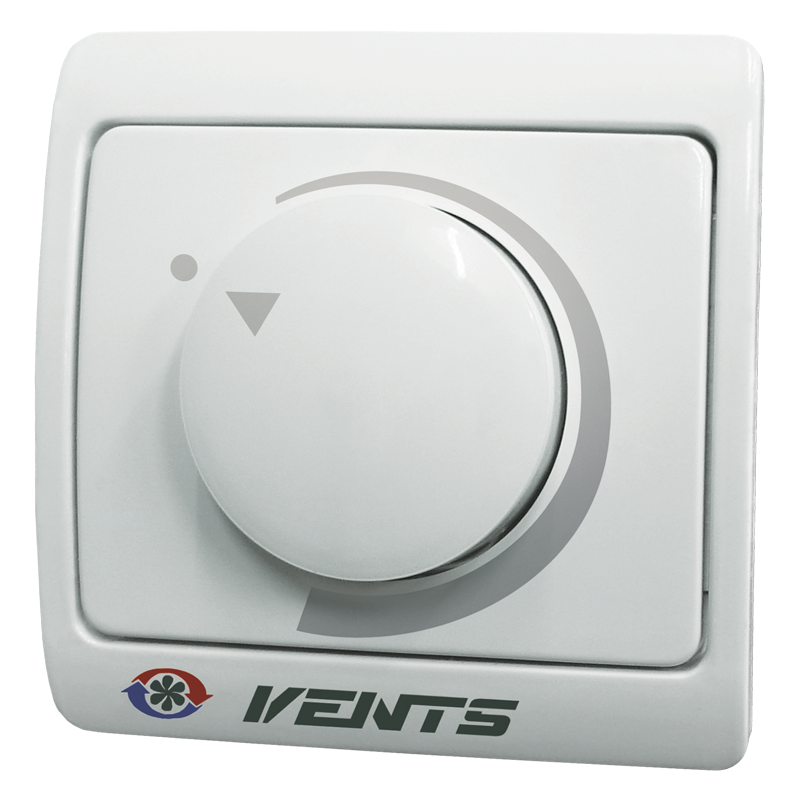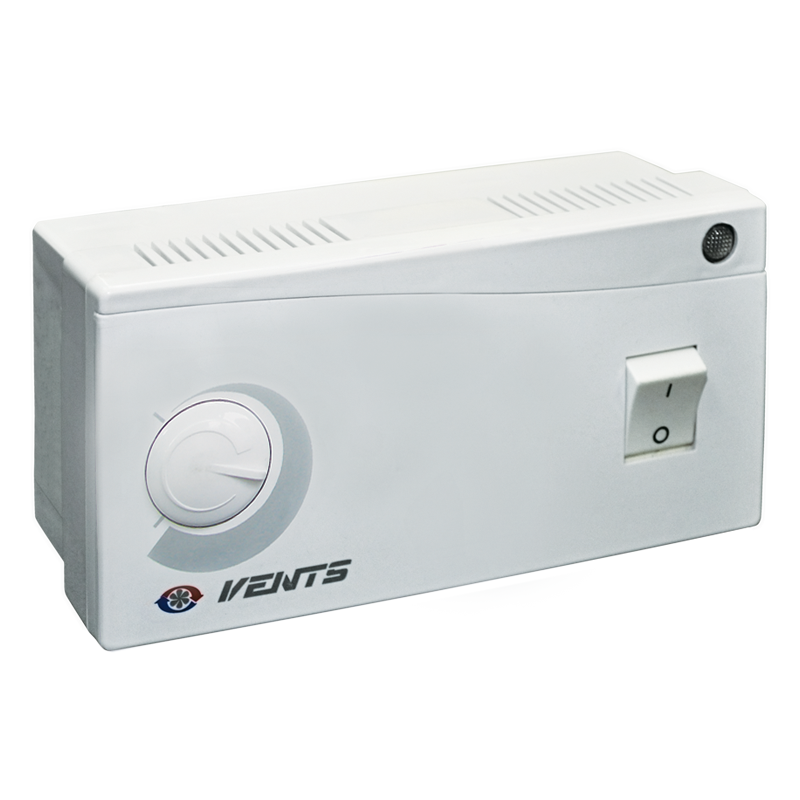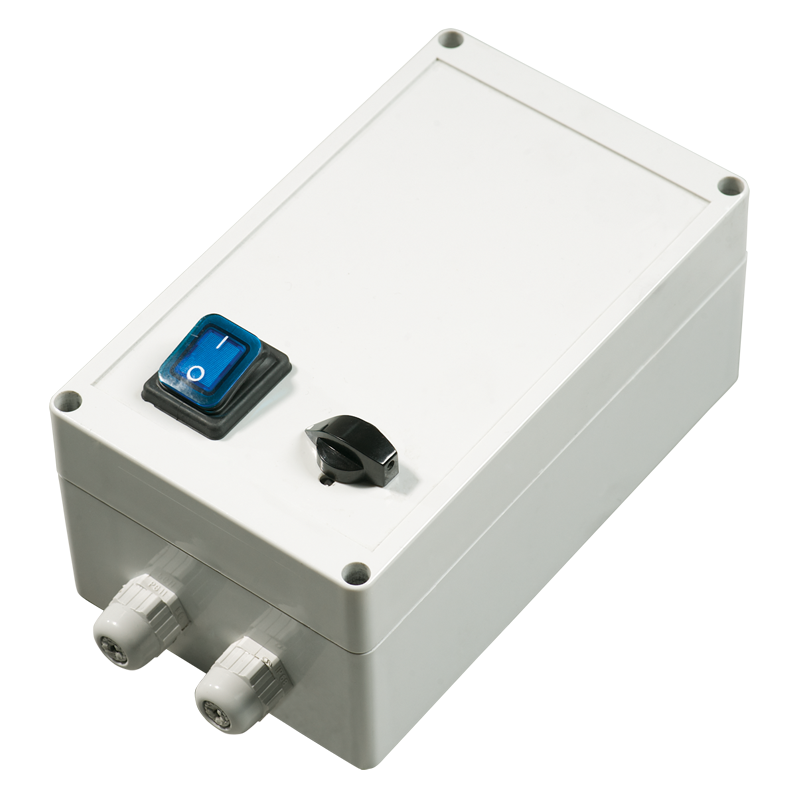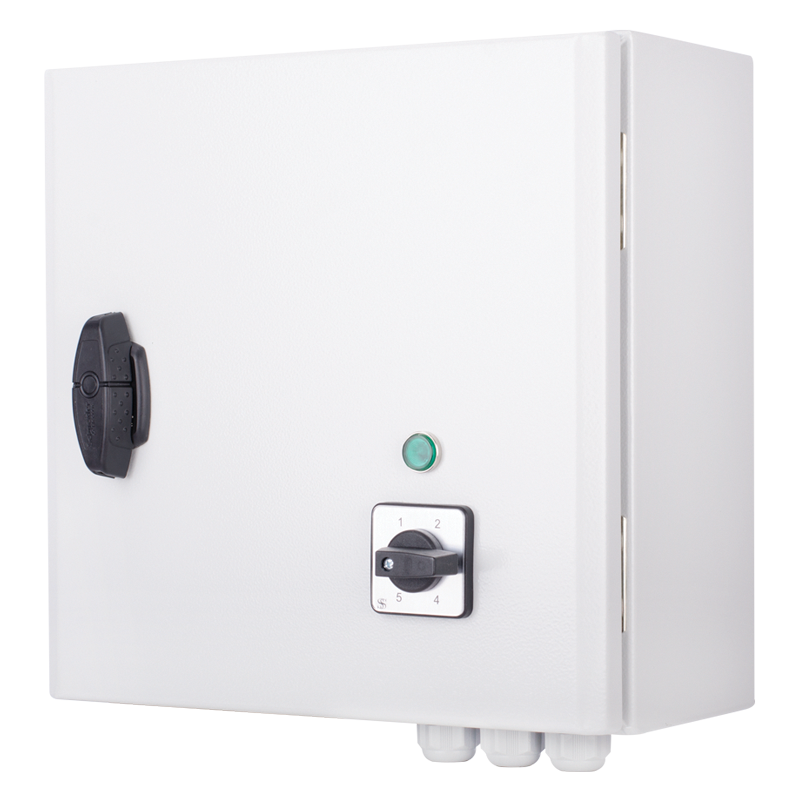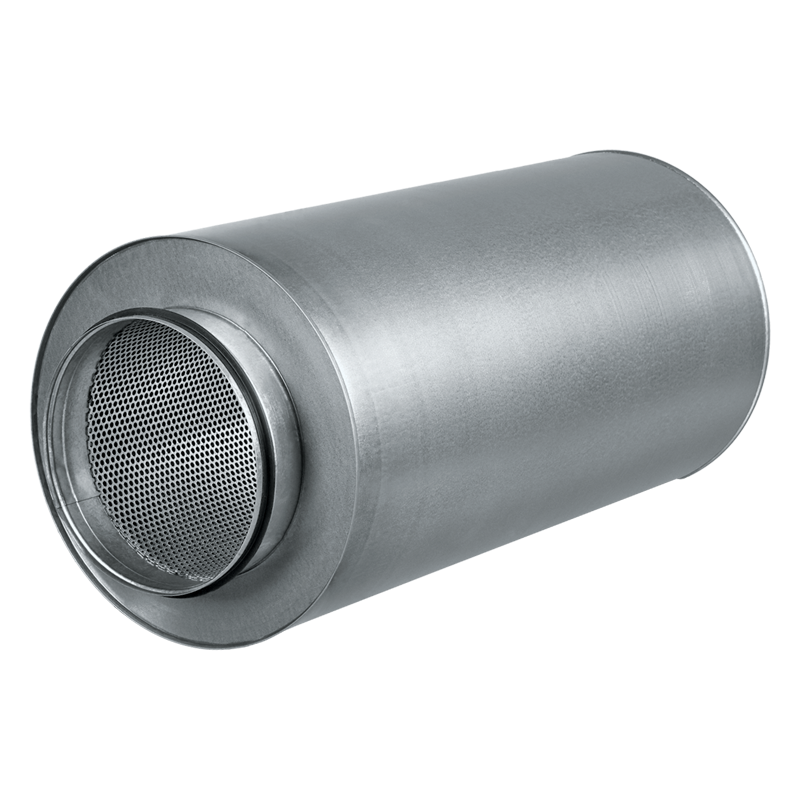| APPLICATIONS |
- KSB fan design enables its application in supply and exhaust ventilation systems for commercial, office and other public or industrial premises with high requirements to noise level and limited mounting space.
|
- Provision is made for installation in a premise above the suspended ceiling.
- Suitable for connection with 100, 125, 150, 160, 200, 250 and 315 mm round ducts.
|
| DESIGN |
- The fan casing is made of galvanized steel sheet and provided with heat- and sound-insulating material.
|
- Round connecting pipes are fitted with rubber seals.
|
| MOTOR |
- The centrifugal impeller with back-curved blades is powered by means of 2-pole asynchronous motor with external rotor.
- The motors are equipped with built-in thermal overheating protection with automatic restart.
- Motor ball bearings with selective lubricating oil ensure low-noise and maintenance-free fan operation.
|
- KSB...M model motor is installed onto the rubber anti-vibration mounts to reduce vibration and noise.
- Models marked KSB...S are featured with the high-powered motors.
|
| SPEED CONTROL |
- Smooth or step speed control with a thyristor or autotransformer speed controller.
|
- Several fans may be connected to one speed controller provided that the total power and operating current do not exceed the rated speed controller parameters.
|
| MOUNTING |
- The fans are designed for inline mounting inside an air duct of matching air duct diameter, in any point of the ventilation system and at any angle.
- The fan shall be fixed to a building by means of supports, suspension brackets or fixation brackets in case of flexible connectors application.
|
- The fan can be mounted in any position with respect to the air flow direction indicated with a pointer on the fan casing.
- Access to the fan maintenance shall be provided.
|
|
The fan with electronic temperature and control module (U option)
|
- The ideal solution for ventilation of the premises requiring permanent temperature control, i.e. greenhouses.
|
- The fan with the electronic temperature and speed control module provides automatic control of the motor speed (air capacity) depending on air temperature in the air duct or in the room.
|
- The fan front panel has the following control knobs:
- speed control knob for setting the motor speed;
- thermostat control knob for setting the temperature set point;
- thermostat indicator light.
|
- The fan is available in two modifications:
- with the temperature sensor integrated inside the fan air duct (U/U1 option);
- with the external temperature sensor fixed on the cable, 4 m long (Un / U1n).
|
|
Control logic of the fan with the electronic temperature and speed control module
|
- Set the desired air temperature (thermostat set point) by turning the thermostat control knob. Set the required minimum impeller speed (air flow) by turning the speed control knob. The motor switches to maximum speed (maximum air flow) as the temperature reaches and exceeds the set temperature set point.
|
- The motor switches to the preset lower speed as the temperature drops down below the temperature set point. To avoid frequent motor speed switches when the air temperature in the duct is equal to the set temperature point, the speed switch delay is activated.
|
| There are two switch delay patterns for various cases: |
- The temperature sensor-based switch delay (U option): the motor switches to higher speed as the air temperature exceeds 2 °C above the set thermostat set point. The motor revers to the preset lower speed as the air temperature drops below the thermostat set point. This pattern is used to keep air temperature to within 2 °C. In this case the motor speed switches are rare.
|
- The timer-based switch delay (U1 option): as the air temperature exceeds the set thermostat set point, the motor switches to higher speed and the switch delay timer is activated for 5 min. The motor reverts to lower speed as the air temperature drops down below the thermostat set point and only after 5 minuts timer countdown. This pattern is used for exact air temperature control. The speed switches for the fan with U1 option are more frequent as compared to the operating logic of the fan with U option, however the minimum operating cycle at one speed is 5 minutes.
|
| Example for temperature sensor delay: |
Example for timer delay: |
- Initial conditions:
- rated speed is set as 60% of the maximum speed
- operating threshold is set as 25°С
- air temperature in the duct is 20°С
|
- Initial conditions:
- rated speed is set as 60% of the maximum speed
- operating threshold is set as 25°С
- air temperature in the duct is 20°С
|
- Fan operates with the rated speed =60%
|
- motor operates with the motor speed =60%
|
| ↓ |
↓ |
- air temperature in the duct rises
- Fan operates with the rated speed =60%
|
- The temperature in the duct rises, reaches 25°C and keeps rising
|
| ↓ |
|
- air temperature in the duct reaches 27°С
- Fan operates with the speed =100%
|
- Fan switches to the maximum speed =100% and the delay timer switches for 5 minutes on
|
| ↓ |
↓ |
- air temperature in the duct goes down
- Fan operates with the speed =100%
|
- the temperature in the duct goes down
- The fan operates with the maximum speed =100%
|
| ↓ |
↓ |
- temperature in the duct reaches 25°C again
- Fan switches to the preset rated speed =60%
|
- the temperature in the duct reaches 25°C and keeps going down
|
| |
↓ |
| |
- after the timer stops, the motor switches to the preset rated speed (=60%). After the speed switch the timer switches again for 5 minutes on
|
| |
↓ |
| |
- the temperature in the duct rises, reaches 25°C and keeps rising
|
| |
↓ |
| |
- after the timer stops, the motor switches to the maximum speed (=100%). After the speed switch the timer switches again for 5 minutes on.
|
| |
- Thus, in timer delay pattern the delay timer activates every time the fan speed changes.
|
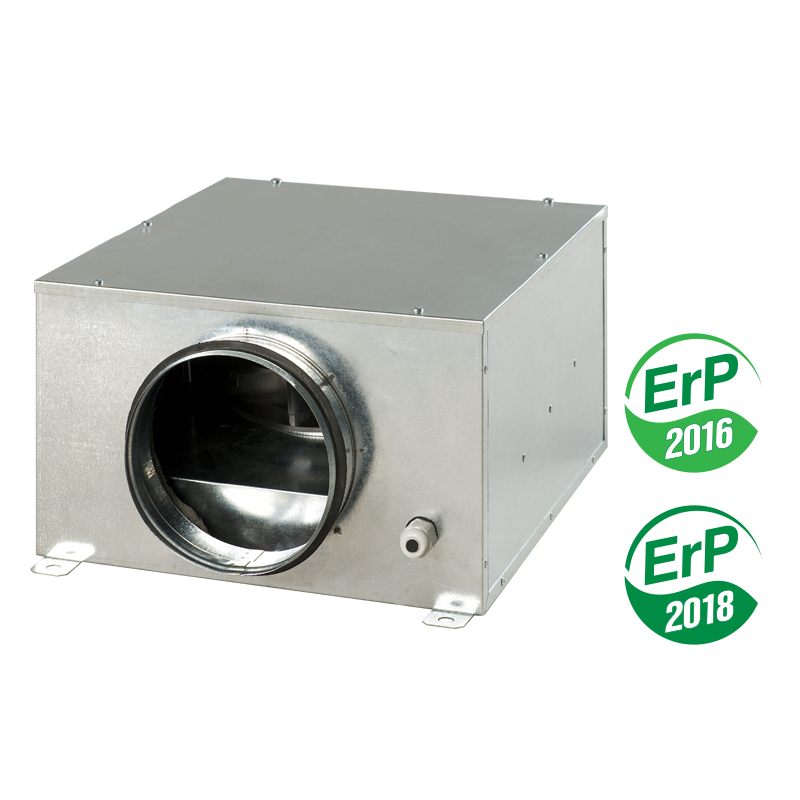
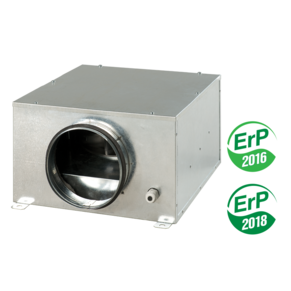







 Domestic fans
Domestic fans  Industrial and commercial fans
Industrial and commercial fans  Single-room ventilation systems with heat recovery
Single-room ventilation systems with heat recovery  Air handling units
Air handling units  Air heating systems
Air heating systems  Smoke extraction and ventilation
Smoke extraction and ventilation  Air sterilizers
Air sterilizers  Accessories for ventilating systems
Accessories for ventilating systems  Electrical accessories
Electrical accessories  Ventilation ducts and fittings
Ventilation ducts and fittings  Air distribution components
Air distribution components  Ventilation kits and vents
Ventilation kits and vents 







